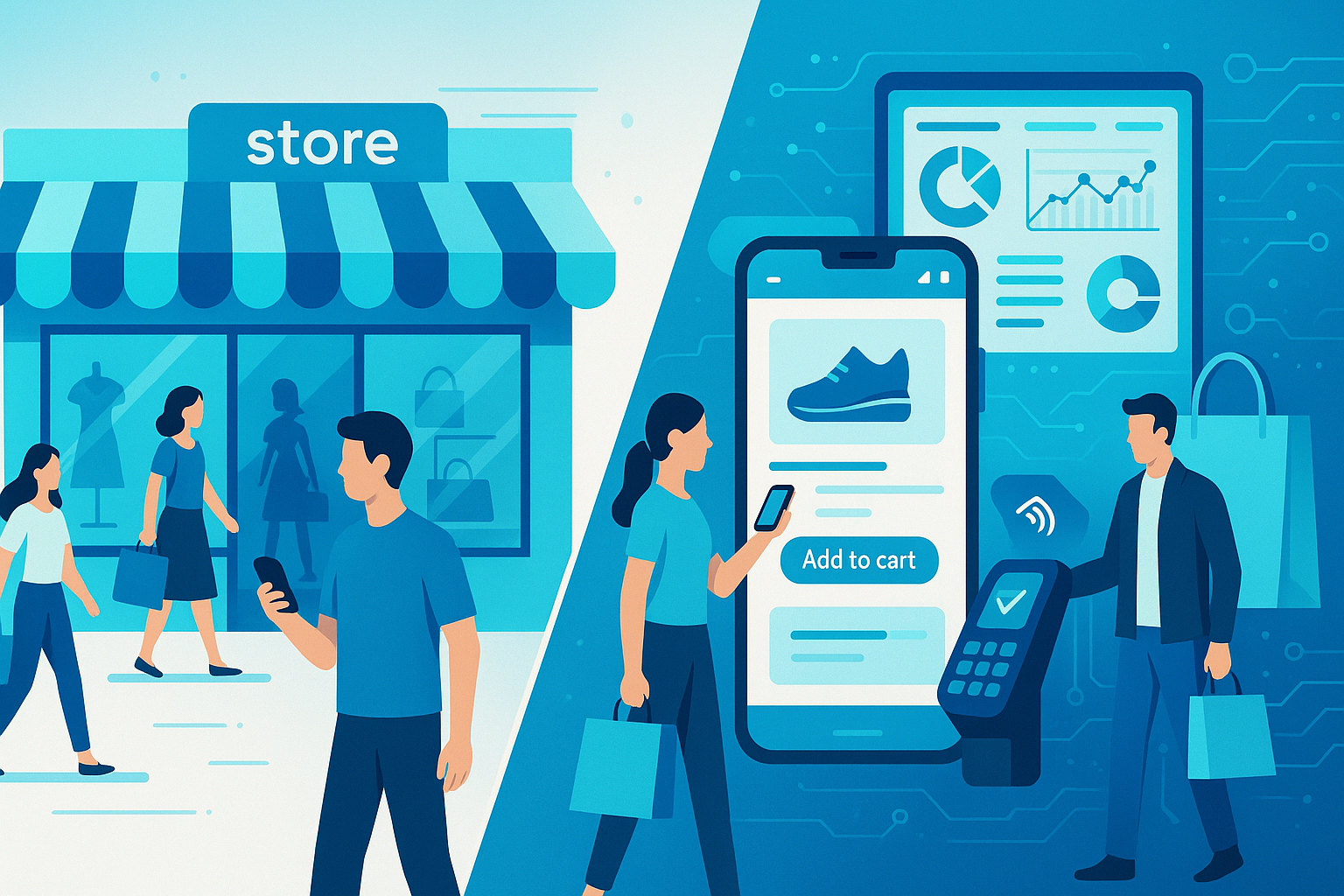As we step deeper into the digital age, retail is undergoing a dramatic transformation. What used to be optional—maintaining an online presence—is now essential for survival. In 2025, going digital isn’t just a strategy for growth; it’s the lifeline for retail businesses aiming to stay competitive, visible, and profitable.
Today’s consumers begin their buying journey online, even when shopping locally. That’s why learning how to manage your digital footprint through tools like Google Business Profile is more important than ever. Enrolling in a Google My Business course can empower retailers to leverage local searches, gain visibility, and convert foot traffic through online discovery.
The Digital Consumer in 2025
Customer behavior has evolved rapidly in recent years. Shoppers no longer wait to visit a store to explore their options—they research online, compare products, read reviews, and then decide where to shop. Even for purchases that are fulfilled in person, the decision-making often starts on Google.
Search terms like “grocery store near me” or “best boutique in [city]” are at an all-time high. For retailers, this means one thing: if your business isn’t easily found online, it may as well not exist in the eyes of the modern consumer.
Key Benefits of Going Digital
Adopting a digital-first approach can benefit retailers in more ways than just visibility. Here are some of the most impactful advantages:
- Increased Reach: Digital tools allow local stores to reach customers beyond their immediate area and even attract tourists or relocating residents.
- Improved Customer Experience: Online listings, chat support, maps, and reviews make it easier for customers to interact with your business.
- Better Insights: Digital platforms provide analytics and performance data that help you understand customer behavior and improve your strategy.
- Higher Conversion Rates: A well-optimized online presence can directly influence purchase decisions, both online and in-store.
Why Local SEO Matters More Than Ever
Local search engine optimization (SEO) has become a pillar of success for modern retailers. Ranking higher on local search results not only improves traffic but also builds trust with potential customers.
In 2025, Google’s algorithms are even more focused on user intent and hyperlocal accuracy. Businesses that prioritize local SEO tactics like Google Business Profile optimization, local citations, reviews, and proximity-based keywords will dominate search rankings.
That’s why joining the best local SEO course can be a game-changer. It teaches retailers how to appear in the “local pack,” optimize for voice search, and use schema markup—tactics that go far beyond basic listings.
Digital Tools Every Retailer Should Use
Retailers today have access to a wide array of tools designed to simplify digital adoption. Whether you’re a one-store shop or a growing chain, the following tools are essential:
- Google Business Profile: Helps you appear in local search and on Google Maps.
- Facebook & Instagram Shops: Connects your inventory to social media.
- WhatsApp Business: Allows instant communication with customers.
- Online Payment Gateways: Enables easy in-store or home delivery payment options.
- Customer Review Platforms: Helps you collect and showcase positive feedback.
Learning how to set up and manage these tools can significantly improve your reach and customer engagement, which is why structured learning like a Google My Business course is so valuable.
Common Challenges Retailers Face Going Digital
Despite the benefits, many retailers hesitate to go digital due to common concerns:
- Lack of technical knowledge
- Fear of high costs
- Limited time or staff resources
- Doubts about return on investment
The good news? These challenges are manageable with the right education and strategy. Courses tailored for retail businesses simplify digital concepts and make implementation practical and achievable.
Real-World Impact of Going Digital
Businesses that embrace digital platforms often experience growth in the following areas:
- Foot traffic increase due to improved online visibility
- Higher customer retention via remarketing and loyalty tools
- More 5-star reviews, boosting brand credibility
- Improved inventory turnover with integrated marketing
In highly competitive markets, having a stronger digital presence than your competitors could be the deciding factor for many customers.
FAQs
Q. What is the first step for a retailer going digital?
A. The best place to start is by creating or optimizing your Google Business Profile. It helps your store show up in local search and maps results.
Q. How can a Google My Business course help me?
A. A well-structured course can teach you how to set up, optimize, and manage your business listing to improve visibility and customer trust.
Q. What will I learn in the best local SEO course?
A. You’ll learn keyword optimization, content strategies, backlink building, review management, and how to rank in local search results.
Q. Is digital marketing only for large retailers?
A. Not at all. Small and local businesses often benefit the most, as digital tools can help them compete with larger brands on a local level.
Q. How long does it take to see results from local SEO?
A. Results can begin within a few weeks, but noticeable improvements in rankings and traffic usually take 2–3 months with consistent effort.
Retail in 2025 is no longer about just having a storefront—it’s about being where your customers are, and that place is online. Going digital isn’t just a trend; it’s a necessity for survival and growth. By embracing digital tools, optimizing for local search, and learning how to manage your online presence effectively, retailers can thrive in a competitive marketplace.
